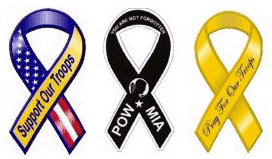British Islamists’ Cyber Camouflage
byDominic Whiteman
Partly due to the pressure of new terror laws in Britain and partly because of the effectiveness of Destroyers of jihadi websites like Internet Haganah, British-based radical Islamists have sought more imaginative online solutions both to maintain an online presence (even when they are banned) and to keep on recruiting (something they are increasingly desperate to do in a climate justifiably increasingly hostile towards them).
Whereas, in the past, Al Mujahiroun and its banned surrogate groups such as Al Ghurabaa and the Saviour Sect maintained an open web presence under Islamic generics like “Followers of Ahl Us-Sunnah wal Jamma”, “Ummah” or “Salaf”, with open generic domain websites set up under variations of these names, now – infiltrated as they are - they consider even the password-protected forums they attach to these generic sites as lacking in security.
Following the example of more technically-aware radical Islamist groups like Hizb ut Tahrir – who have cleaned up their British websites, which (see retrospective search engines) used to be overloaded with anti Semitic and extremist content – the radical British Islamists have recently chosen to operate a defensive, layered approach to their online activities, now with added camouflage.
In the case of groups which are yet to be banned, this involves having a primary layer website associated with their name – which meets all terror law requirements. These sites are normally full of prejudiced political articles about the “Global war on Muslims”, about the failure of “Western Society” (stories of grannies in the west dying alone in poverty, of alcohol abuse by children and pedophilia supposedly rife in western society) and pick-and-mix religious articles, which use lines of the Qur’an willy-nilly to suit whatever particular point they are trying to make, whether justifying Iranian nukes or ensuring that their sister is wrapped from head to toe in black Egyptian cotton in case she’s offered cash by a scout from Plumpers gentlemen’s magazine (or, more likely, chooses to use facial expression to disagree with her misogynistic and repressive brothers).
In the case of banned groups, the primary layer is purposefully obvious – in the case of Al Mujahiroun-linked groups, sites such as omarbakri.info (named after Al Mujahiroun’s founder) include the odd extreme article and hot-headed video or audio file, hoping to attract and then delay less gifted law enforcers. Banned group names don’t get a mention, though tone and content both point blatantly to ownership by the banned group members.
The second layer of websites vary. In the case of groups which are not banned, they tend to use their foreign branch sites to get their true message across (Hizb ut Tahrir’s .org and .info websites link to their more extreme brother sites, based in places like Indonesia and Bangladesh, where they are less scrutinized and can get away with more extreme language). In the case of banned groups and groups yet to be banned, both tend to use second layer generics – for example 1924.org (the date of the end of the Caliphate as used by Hizb ut Tahrir in various formats….even Hizb ut Tahrir leader Imran Waheed’s publicly available cell phone number is 07074 1924 00) or aswj.net (Followers of Ahl Us-Sunnah wal Jamma used by Al Mujahiroun) – to stock their more extreme material (much of which is illegal under current British terror legislation). Again, words like Ummah, Islam and Salaf keep springing up as parts of domains for their sites – islambase.co.uk, for example, currently houses a lot of al Mujahiroun stock material (Bakri rants, Izzadeen lectures etc) and through its password-protected forums within a few clicks you’re soon onto the more hardcore stuff (beheading videos, al Qaeda recordings and incriminating speeches). They figure that authorities will not dare ban names using Islamic generics as they would obviously be acting in an Islamophobic way.
But the real innovation of the last weeks, in terms of virtual British radical Islamism, has been the disguise of old radical Islamist websites, which have been redundant for several months. Whereas before the redundant sites simply displayed “This page cannot be displayed” or “under construction”, now these sites (the authorities know the names) display a brand-less search engine, made to look just like a Google affiliation or other affiliation site. At first glance, the enquirer will simply clock the standard advertisements and click away – thinking the domain redundant (as so many previously active domains used by these radicals are redundant). Even at second glance, pictures of bikini-clad women or dating services make the enquirer confirm his first suspicion – that the site is redundant, as the last thing prudish radical Islamists are going to do is have photos and advertisements of such kuffar (non-believer) wickedness on their active sites, even if their hero Bin Laden made regular drunken appearances in the early 1970’s at Beirut’s brothels or in later years fantasized endlessly about that arch kuffar temptress, Whitney Houston.
...
Pertinent Links:
1) British Islamists’ Cyber Camouflage
Wednesday, April 18, 2007
Subscribe to:
Post Comments (Atom)




No comments:
Post a Comment